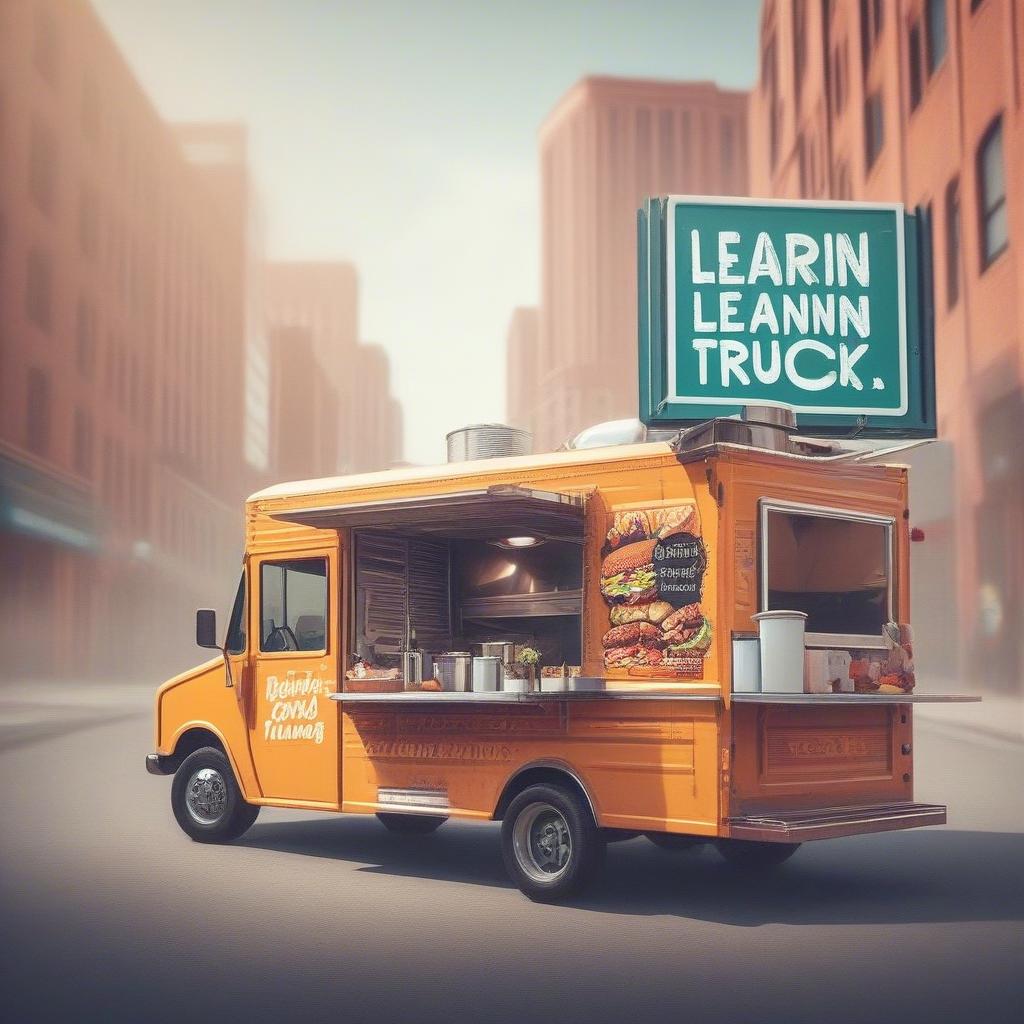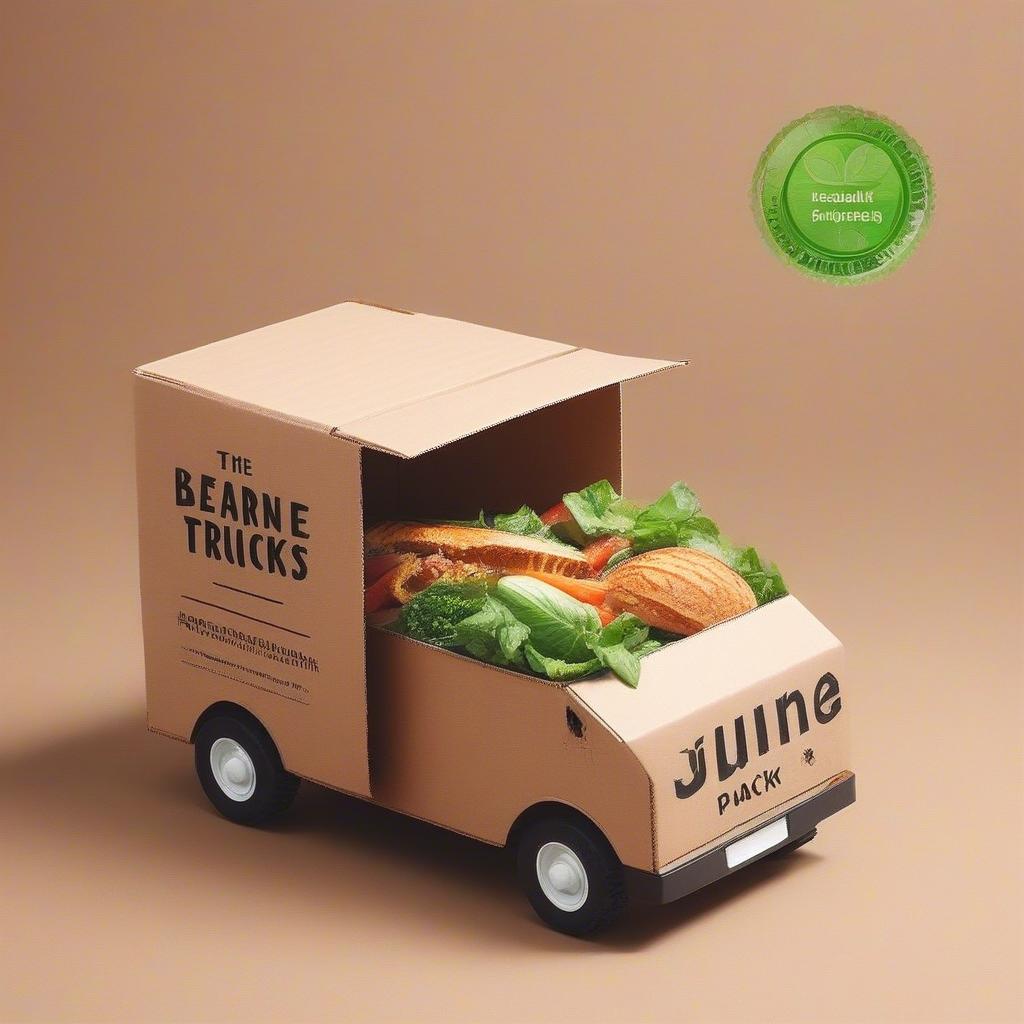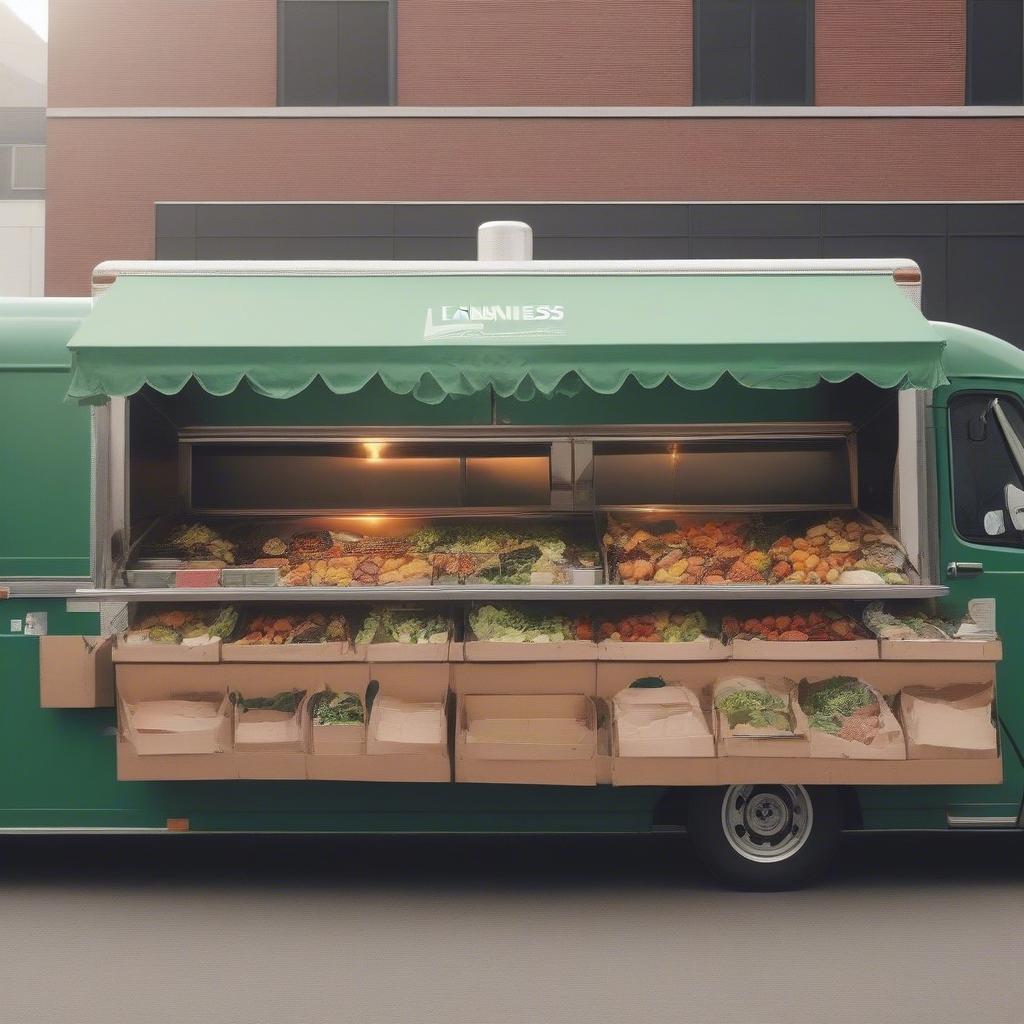
How to Save Money While Running Your Food Truck
Running a food truck is an exciting venture, filled with the aroma of delicious food and the thrill of serving happy customers. But beneath the surface lies the constant challenge of managing finances effectively. One wrong turn can quickly lead to a leak in your budget, making cost reduction not just a good idea, but a necessity. This comprehensive guide will be your compass, providing practical food truck tips and strategies to help you save money while keeping your wheels rolling and your profits growing.
Understanding Your Food Truck Expenses: The First Step to Saving
Before you can effectively cut costs, you need to know where your money is going. It’s like trying to fix a leaky faucet without knowing where the leak is. Let’s break down the common expenses of running a food truck:
Initial Investment Costs
- Truck Purchase or Lease: This is often the biggest upfront expense. Buying a new truck can be a significant financial commitment, while leasing might offer lower initial costs but could cost more in the long run.
- Equipment: Ovens, fryers, refrigerators, prep tables – the list goes on. Quality equipment is crucial, but it doesn’t always mean buying the most expensive.
- Permits and Licenses: These are essential for legal operation and can vary significantly depending on your location.
- Initial Inventory: Stocking up on food, packaging, and other supplies is necessary before you can open your doors.
Operational Costs
- Food Costs: The ingredients you use are a significant portion of your expenses.
- Labor Costs: Whether it’s your own time or paying employees, this is a recurring cost that must be carefully managed.
- Fuel and Maintenance: Keeping your truck running smoothly requires fuel and regular maintenance.
- Marketing and Advertising: Attracting customers requires investing in marketing efforts.
- Utilities: Generators for power, propane, and water are necessary.
- Insurance: Covering your business against accidents and liabilities.
- POS and Payment Processing: Transactions cost money, whether it’s credit card fees or software charges.
- Waste Disposal: Managing waste properly often involves additional costs.
Understanding where your money is going allows you to identify areas where you can make adjustments and start to save money. Let’s move into those strategies now.
Strategic Sourcing and Smart Inventory: Making Every Penny Count
The key to saving money in a food truck starts with how you source your supplies. It’s not just about buying cheap ingredients; it’s about being strategic and smart.
Negotiate with Suppliers
- Bulk Buying: Buying in bulk often leads to discounts. Build relationships with suppliers and see if they offer special deals for larger orders.
- Seasonal Produce: Focus on ingredients that are in season. They’re typically cheaper and fresher.
- Payment Terms: Try negotiating payment terms with your suppliers. Longer payment periods can help manage cash flow.
- Shop Around: Don’t settle for the first supplier you find. Compare prices and quality from various options.
- Building Relationships: A long-term relationship can lead to better prices and priority access to the best products.
Inventory Management: Waste Less, Save More
- Track Inventory: Keep a close eye on your inventory to prevent over-ordering or spoilage.
- FIFO (First In, First Out): Use the FIFO method to ensure that older ingredients are used before newer ones. This helps reduce waste.
- Cross-Utilize Ingredients: Design your menu so that ingredients can be used in multiple dishes. This reduces the variety and quantity you need to keep in stock, lowering waste.
- Accurate Forecasting: Use past sales data to estimate future needs.
- Regular Audits: Conduct regular inventory checks to identify any discrepancies or potential problems early.
Example: Streamlining Your Menu
Instead of offering a wide variety of dishes each with specialized ingredients, focus on a smaller menu with ingredients that can be used in several dishes. This not only reduces waste but also streamlines your ordering process. For instance, if you offer tacos, use the same base protein (beef, chicken, or beans) in different variations.
Labor Costs: Working Smarter, Not Harder
Labor is a significant expense, especially if you have employees. However, there are ways to reduce cost without compromising the quality of your service.
Optimize Staffing
- Cross-Training: Train your staff to handle multiple roles. This reduces the need for specialized positions.
- Flexible Schedules: Schedule staff based on demand. Don’t overstaff during slow periods.
- Part-Time vs. Full-Time: Consider hiring more part-time employees to avoid paying full-time benefits.
- Utilize Technology: Use scheduling software to plan and manage staff shifts efficiently.
- Retain Good Employees: High employee turnover is costly. Focus on retaining your best employees by offering fair pay and good working conditions.
Your Time is Valuable Too
- Efficiency: Streamline your work processes to save time and reduce the need for extra help.
- Batch Preparation: When possible, prepare ingredients in advance. This saves time during busy periods.
- Automated Processes: Utilize technology to automate routine tasks, like online ordering.
Example: Task Prioritization and Delegation
Instead of trying to do everything yourself, prioritize tasks. Focus on what you do best (cooking, customer interactions) and delegate other tasks like cleaning and inventory to staff.
Fuel, Maintenance, and Utilities: Keeping Your Truck Running Efficiently
These are the "invisible" costs that can quietly eat away at your profits if not managed well. Smart fuel, maintenance, and utility management are key to long-term cost reduction.
Fuel Efficiency
- Plan Routes: Optimize your routes to minimize driving time and fuel consumption.
- Regular Maintenance: A well-maintained engine is a fuel-efficient engine.
- Lighten the Load: Avoid carrying unnecessary weight in your truck.
- Fuel Efficient Driving: Practice fuel-efficient driving habits like moderate acceleration and avoiding excessive idling.
- Fuel Discounts: Look out for fuel loyalty programs or discounts.
Truck Maintenance
- Regular Checks: Regular maintenance checks can prevent costly repairs down the road.
- DIY Repairs: When possible, learn to perform basic maintenance tasks yourself.
- Preventative Maintenance: Following a preventative maintenance schedule is crucial to avoid breakdowns.
- Track Maintenance: Keep a log of all maintenance tasks performed to track issues and schedule preventative tasks.
- Reliable Mechanics: Establish a good relationship with a reliable mechanic you can count on.
Utilities Management
- Energy-Efficient Equipment: Invest in energy-efficient generators, refrigeration, and other equipment.
- LED Lighting: Switch to LED lights for lower energy consumption.
- Water Conservation: Install water-saving devices and train staff to conserve water.
- Propane Efficiency: Ensure your propane system is efficient and well-maintained.
- Monitor Usage: Keep an eye on your utility usage to identify areas for improvement.
Example: Scheduled Maintenance
Implementing a regular maintenance schedule for your truck, including oil changes, tire checks, and engine tune-ups, can prevent major breakdowns and keep fuel consumption at optimal levels.
Marketing and Advertising: Targeted Efforts for Maximum Impact
Marketing is essential for attracting customers, but it doesn’t have to break the bank. Focus on food truck tips for cost-effective marketing that delivers results.
Leverage Social Media
- Free Social Media Marketing: Use social media platforms like Instagram, Facebook, and Twitter to promote your food truck. Share photos, updates, and specials.
- Engage with Followers: Interact with your followers. Respond to comments and questions.
- Targeted Advertising: If you do pay for social media ads, focus on targeting your ideal customers based on location, interests, and demographics.
- Run Contests & Giveaways: Encourage engagement by running contests or giveaways on social media.
- Consistent Posting: Maintain a consistent posting schedule to keep your audience engaged.
Local Partnerships
- Collaborations: Partner with local businesses or organizations for cross-promotion opportunities.
- Local Events: Participate in local events, festivals, and farmers markets.
- Community Involvement: Get involved in community initiatives to build relationships and gain exposure.
- Cater Local Events: Offer catering services for local events.
Cost-Effective Marketing
- Loyalty Programs: Reward loyal customers with loyalty programs.
- Referral Programs: Incentivize customers to refer new business.
- Word-of-Mouth Marketing: Encourage customers to share their positive experiences.
- Signage & Branding: Invest in clear, attractive signage that helps customers find your truck.
- Online Reviews: Encourage satisfied customers to leave reviews.
Example: Social Media Content Plan
Create a content calendar that outlines what you’ll post each week. This ensures a steady stream of content without overspending on advertising.
Operations: Optimizing Your Daily Routines
Your daily operations can be optimized to save money and improve efficiency. Let’s look at how.
Streamline Ordering & Payment Processes
- Online Ordering: Offer online ordering to reduce errors and speed up service.
- Multiple Payment Options: Offer multiple payment methods, including cash, cards, and mobile payments.
- POS Systems: Implement a reliable POS system to track sales, inventory, and customer data.
- Digital Receipts: Offer digital receipts to save on paper costs.
- Self-Service Options: If possible, implement self-service options to streamline the ordering process.
Optimize Waste Management
- Reduce Packaging: Use minimal packaging and encourage customers to bring their own containers.
- Recycle: Implement a recycling program for your waste.
- Compost: Compost food waste when possible.
- Minimize Spoilage: Store food properly to prevent spoilage.
- Proper Disposal: Follow proper waste disposal procedures.
Example: Digital Ordering & Reduced Waste
By implementing online ordering through a website or app, you can reduce errors and speed up service times. Also, by offering customers a discount for bringing their own containers, you can significantly reduce your packaging costs.
Negotiation and Cost-Saving Mindset: Making it a Habit
Saving money isn’t a one-time event, it’s a continuous process. Develop a cost reduction mindset and always look for ways to improve.
Continuous Improvement
- Track Expenses: Regularly track your expenses to identify areas for improvement.
- Analyze Data: Analyze your sales data to understand what’s working and what’s not.
- Seek Feedback: Ask for feedback from customers and employees.
- Adapt and Adjust: Don’t be afraid to try new things and adjust your strategies as needed.
- Stay Informed: Keep up with industry trends and best practices.
Embrace a Negotiation Culture
- Negotiate Rates: Don’t be afraid to negotiate rates with suppliers, vendors, and service providers.
- Seek Discounts: Always ask about discounts and special offers.
- Shop Around: Compare prices and services from multiple providers.
- Be Proactive: Proactively seek out opportunities to reduce costs.
- Be Persistent: Don’t give up easily. Persistently look for ways to save.
Example: Regular Financial Review
Set aside time each week to review your expenses and financial data. Identify any areas where you can trim costs or improve efficiency. This proactive approach will lead to significant long-term savings.
Learn Business: Your Partner in Success
Running a successful food truck involves navigating a complex world of finances, operations, and marketing. That’s where Learn Business can be your trusted ally. We provide a suite of resources designed specifically for small businesses like food trucks. Here’s how Learn Business can support you:
Templates for Success
- Budgeting Templates: Our customizable budget templates help you track income and expenses effectively. This will give you a complete overview of where your money is going and where you can make adjustments to save money.
- Inventory Management Templates: Keeping track of your inventory is crucial to minimizing waste and preventing losses. Our inventory management templates make this process organized and efficient.
- Menu Planning Templates: Creating a strategic menu that utilizes ingredients efficiently is important for reducing costs. Our menu planning templates provide a framework for optimizing your menu.
- Marketing Plan Templates: Developing a cost-effective marketing plan that reaches your target customers is a core aspect of business success. Our marketing templates provide a roadmap for achieving your marketing goals.
- Staff Scheduling Templates: Managing your staff efficiently is crucial for minimizing labor costs. Our scheduling templates help you to assign shifts based on needs and availability.
Guidance Tailored to Your Needs
- Business Plans: We help you create a comprehensive business plan, providing a clear roadmap for success.
- Financial Management: Our resources provide guidance on managing cash flow, reducing expenses, and increasing profitability.
- Marketing Strategies: We offer proven marketing strategies to help you reach more customers without breaking the bank.
- Legal & Compliance: We help you understand the legal and compliance requirements for operating a food truck business.
- Operational Excellence: We provide guidance on streamlining your operations to improve efficiency and reduce costs.
Support for Your Food Truck Journey
Learn Business understands the unique challenges of running a food truck. Our resources are designed to be practical, actionable, and easy to use. Whether you’re just starting out or looking to grow your business, Learn Business provides the support and tools you need to succeed. We’re not just a resource; we’re your partner in building a thriving and profitable food truck venture. We can provide the assistance you need to really be able to save money and reach your business goals.
Conclusion: Your Path to Profitability
Running a successful and profitable food truck takes more than just great food. It requires a keen understanding of your expenses, strategic planning, and a continuous commitment to finding ways to save money. By implementing the food truck tips and strategies outlined in this comprehensive guide, you’ll be well on your way to achieving financial success. Remember, cost reduction isn’t a one-time fix, but a continuous effort. By embracing a cost-saving mindset and utilizing the resources at your disposal, such as Learn Business, you can ensure your food truck thrives for years to come.



Leave a Reply